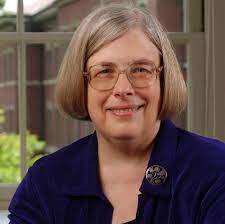Skocpol, Theda

Bio: (1947-) American sociologist and political scientist. Theda Skocpol received her doctorate and spent most of her academic career at Harvard University. She is best known for her comparative and historical study of states and revolutions.
In the book States and Social Revolutions: A Comparative Analysis of France, Russia, and China (1979), Skocpol examines how the activities of the state, as an independent actor, influenced the revolutions in France (1788), China (1911), and Russia (1917). Skocpol is very critical of earlier Marxist theories of revolutions, because they overemphasized the importance of class conflict, and neglected the activities and role of the state in revolutions. Before the outbreak of the revolutions, all three states were absolute monarchies with administrative and military hierarchies that maintained centralized control.
All three states were agrarian states with large peasant populations, were economically stagnant and had fiscal problems, suffered external military threats or defeats, and had inadequate administration and centralized management. The large peasant population, which was very poor in all three states and was very dissatisfied and such a situation, really was a source of class conflict, as earlier Marxists stated. Economic stagnation only increased the dissatisfaction of the peasant population. External military threats and defeats caused great negative social and economic consequences and deepened the crisis.
Although the state, led by an absolutist monarch, exercised its power over the population in a centralized and repressive manner, its real control over society was weak. The inability of the state and its administration to reform, in line with unfavorable external and internal circumstances, inevitably led to the success of the revolutions in all three states. In her analysis, Skocpol doesn’t pay attention to the activities of concrete individual actors, when she studies the success of revolutions. She even diminishes the importance of class conflict and peasant dissatisfaction, because these factors always exist in every agrarian state, it is only a question of how each state organizes its actions, in order to control those conflicts and dissatisfaction.
Skocpol continued to develop her theory of the autonomous action of the state in the book Bringing the State Back In (1985). She believes that states always have significant autonomy and the ability to achieve their own political goals, which may differ from the interests and goals of individual classes or society as a whole. The goal of every state is to increase its own power and influence. They achieve this by increasing the power and sphere of influence of the state administration and other state institutions. To achieve this, states must establish stable budget revenues through taxes and other revenue streams. States often increase their own power by recruiting the most capable and educated individuals as their cadres. A large and strong army is also a source of state power. Skocpol believes that the state structure can significantly influence the ability of different classes, even the most economically powerful ones, to pursue their own interests. Not all states have the same power to act autonomously, and that power depends on several factors: the military and economic power of the state; the level of sovereign control over its territory; the existence of regular sources of high budget revenues; the level of external debt (lower the debt is, more power state has).
In the early 1990s, Skocpol shifted the focus of her study from the state to civil society and social policy. She somewhat abandons her earlier position on the great autonomous power of the state. In recent works, Skocpol recognizes the influence social movements and citizen associations can have on shaping the democratic process and social policy. In addition, classes can have a big impact, which is evident in the difference between social policy in the United States and Europe. The welfare state is much more developed in Europe, because in the United States, the capitalist class has enormous power, while the working class is divided by ethnic and racial differences.
Fields of research
Actors Capitalism Capitalist Class Civil Society Classes Conflict Conservative Ideology Control, Social Crisis Democracy Dictatorship Economy Health History Institution and Organization Monarchy Movements, Social Politics Poverty Power, Political Revolutions Rural Social Policy State War Working ClassTheoretical approaches
Conflict TheoryMain works
States and Social Revolutions: A Comparative Analysis of France, Russia, and China (1979);
Vision and Method in Historical Sociology (1984);
Bringing the State Back In (1985);
Protecting Soldiers and Mothers: The Political Origins of Social Policy in the United States (1992);
Social Revolutions in the Modern World (1994);
Social Policy in the United States (1995);
Boomerang: Clinton’s Health Security Effort and the Turn Against Government in U.S. Politics (1996);
Civic Engagement in American Democracy (1999);
The Missing Middle: Working Families and the Future of American Social Policy (2000);
Diminished Democracy (2003);
Inequality and American Democracy: What We Know and What We Need to Learn (2005);
What a Mighty Power We Can Be: African American Fraternal Groups and the Struggle for Racial Equality (2006);
The Transformation of American Politics: Activist Government and the Rise of Conservatism (2007);
Obama and America’s Political Future (2012);
The Tea Party and the Remaking of Republican Conservatism (2012);
Upending American Politics: Polarizing Parties, Ideological Elites, and Citizen Activists from the Tea Party to the Anti-Trump Resistance (2020).

